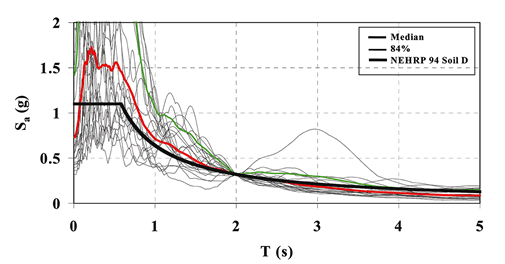
Fig. 1. Example suite of site hazard curves accounting for epistemic uncertainty
in attenuation and source parameters
F=faculty; GS=graduate student; US=undergraduate student; PD=post-doc; I=industrial collaborator; O=other
Click on images to enlarge in a new window
The objective of this project is to implement the performance-based earthquake engineering (PBEE) methodology being developed by PEER for a particular building structure. A key feature of this implementation will be the integration of geotechnical/seismological and structural uncertainties into a unified analysis of system performance.
The uncertainties that will be considered in the analyses include:

Fig. 1. Example suite of site hazard curves accounting for epistemic uncertainty
in attenuation and source parameters

Fig. 2. Foundation/free-field ratio of response spectra as function of foundation
size (be)
accounting for base slab averaging on shallow foundations
Fig. 3. Uncoupled Winkler spring model of soil resistance against foundation

Fig. 4. Response spectra at 5% damping for time history suite. Note suite
is scaled to
a common spectral ordinate. Variability at other periods reflects variability
in
phasing and frequency content of motions within the suite.
The building to be used in this research will be a three-story library building on the UC Merced campus. This building consists of a reinforced concrete moment frame, but a variation consisting of a shear wall configuration will also be considered (because that configuration will have larger soil-structure interaction effects). The sites on which the building is placed will likely be an alluvial soil site in the Los Angeles basin and a shallow soil site in Berkeley.
The end result of the simulation will be a probability density function (PDF) on relevant engineering demand parameters (EDPs) for the building. The effects of the various sources of uncertainty listed above on the EDP dispersion will be assessed.
This project is being coordinately closely with similar work by Greg Deierlein and Keith Porter/Jim Beck.
This project has two important roles in supporting the PEER mission. The first is to illustrate through example the manner in which geotechnical and seismological uncertainties can be integrated into PBEE. The second is to provide insight into the significance of these uncertainties relative to other sources of uncertainty (ground motion, structural) for the prediction of EDP.
Ground motions will be estimated for the site using standard probabilistic seismic hazard analyses, although epistemic uncertainty in the hazard results will be quantified. This epistemic uncertainty will account for variable attenuation relations, site amplification factors, and controlling fault slip rates.
The kinematic interaction effect will be accounted for using simple models recently developed for the FEMA-440 project with PEER funding (e.g., Figure 2).
The spatial variability in soil stiffness and strength will be accounted for through the impact of those parameters on the spring characteristics (e.g., Figure 3). The soil parameter uncertainty characterization will follow PEER-supported work by Kramer and Arduino. Radiation damping will likely not be considered in this Year 7 project, due to the unavailability at present of suitable models in Opensees.
The structural response simulations will be performed in Opensees using structural models previously developed by others as part of the testbed exercise.
We have developed a statistically robust model for site amplification of spectral acceleration based on Vs-30. The work is presented in a paper that was submitted to Earthquake Spectra on September 19, 2003.
We have performed an independent check of the NGA site database to verify the site parameters used in that important project.
We are currently working with PEER’s basin simulation group to identify basin geometric parameters and source parameters that can be used to predict ground motion amplification in basins.
Projects of Deierlein and Porter/Beck are similar. This project differs in focusing on the ground motion and geotechnical uncertainties.
We would like to extend the methodology to applications on different site conditions, possibly including sites with ground failure and sites with significant amplification effects (e.g., soft soil sites).
Results from previous work by PI on soil-structure interaction are being implemented in the FEMA440 document, which will be widely disseminated to structural engineers.
Results from Year 3-6 projects on earthquake ground motions are influencing the NGA project. Results have been used by geotechnical engineers specifying ground motions for use in structural design (e.g., Shannon and Wilson in Seattle).
The following milestones are anticipated for this Year 7 project:
Deliverables will include